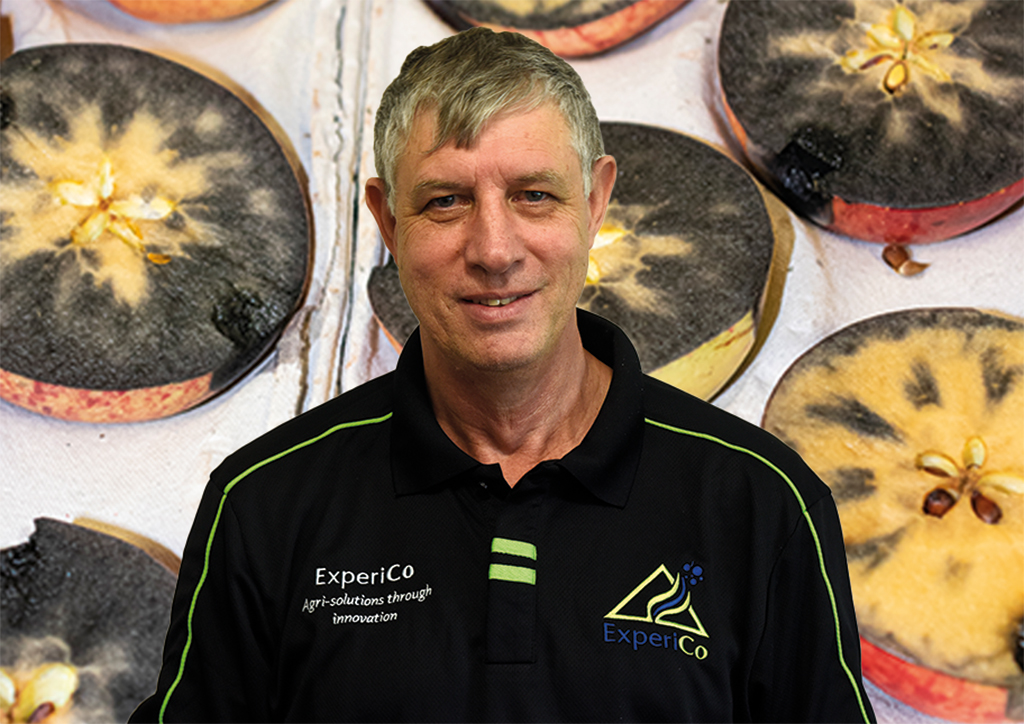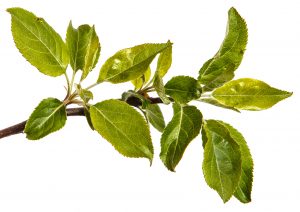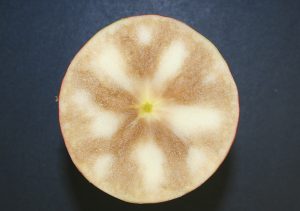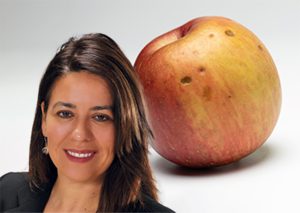
Breaking down starch breakdown
What does it tell us about harvest maturity and storage potential? By Anna Mouton.
Iodine staining is routinely performed to estimate the percentage of starch breakdown in apples. Growers and pack houses depend on this test to make informed decisions about harvesting and storage. But what do the results really mean? And what are the implications for fruit quality and storage potential?
These questions were the topic of a presentation by postharvest specialist Dr Ian Crouch, managing director of ExperiCo Agri-Research Solutions, at the recent Hortgro Science Postharvest Symposium.
Fuel for fruit metabolism
“Starch is a carbohydrate consisting of glucose units,” said Crouch. “You get two types of starch molecules: linear amylose and branched amylopectin. The starch in apples generally contains about 25% amylose and 75% amylopectin.”
Plants fuel their metabolism by burning sugars such as glucose. They make sugars during photosynthesis and either consume them immediately or store them as starch. Starch can be broken down when plants need sugars for energy.
Developing fruit accumulate carbohydrates as starch. This starch is converted to sugars as the fruit matures. The sweetness associated with ripeness is due to high sugar and low starch levels.
“Once harvested, fruit go into decline,” said Crouch. “They lose the lifeblood of the tree, and they need to rely on stored carbohydrates — sugars and starch — for energy to stay alive.”
Senescence following ripening is a natural process for apples, as it facilitates the release of seeds. But growers and pack houses want to delay senescence to maintain quality during storage. According to Crouch, the key is identifying when best to harvest fruit.
“Tree-ripe fruit have the best flavour and eating quality, but they have low energy reserves, and have already started their decline,” he said. “So, fruit must be harvested as close to ripe as possible, but with enough reserves to survive the storage and marketing period.”
Every season is different
Starch breakdown is one of the primary metrics of maturity in apples, but interpreting the results can present challenges due to seasonal variability. Crouch illustrated this with several case studies.
He presented Hortec data on starch breakdown for Cripps Pink in Elgin in the weeks leading up to the 2025 harvest compared with the long-term average. The long-term average shows almost no starch breakdown at 161 days after full bloom. Starch breakdown then increases almost linearly to about 45% at 196 days after full bloom, whereafter the rate of breakdown slows before reaching nearly 50% by 203 days after full bloom.
In 2025, starch breakdown trended slightly below the long-term average until 196 days after full bloom, when it shot to above 75% at 203 days after full bloom.
He also compared starch breakdown in Rosy Glow in 2023 and 2024. The breakdown was roughly similar until about two weeks before harvest. In 2023, it then accelerated so that starch breakdown at harvest was just above 40%, compared with just above 25% in 2024.
“What effect does this difference in the rate of starch breakdown have on post-storage quality?” asked Crouch, adding that the picture is further complicated by preharvest ripening inhibitors such as AVG (aminoethoxyvinylglycine) and 1-MCP (1-methylcyclopropene).
Crouch provided examples where the application of 1-MCP four weeks before harvesting reduced starch breakdown by nearly 15% in Red Delicious and by nearly 10% in Granny Smith.
The iodine starch test
Iodine stains starch but not sugars. This reaction forms the basis of the iodine starch test in which a potassium iodide solution is applied to the cut surface of apples. The resulting blue pattern is compared to standard industry charts to obtain a starch index.
“The potassium iodide solution reacts with long-chain amylose starch molecules. However, amylose only represents about 25% of the starch in apples,” said Crouch. “If 75% of the starch is amylopectin, and this does not react well with the iodide, how accurate is the starch index?”
He also highlighted that different cultivars produce different starch degradation patterns, which is why there are two types of starch charts — radial and circular.
Although the starch index provides an indication of fruit maturity, Crouch cautioned that it must be interpreted in the context of environmental and biological variables that influence starch levels.
For example, a lighter crop load tends to be associated with higher starch levels, and warm summer nights tend to increase respiration and lower starch levels. Cultivars also differ. For example, Fuji apples have a higher-than-average percentage of amylopectin, so they stain lighter with the iodine test.
“Therefore, one always needs to look at other maturity indices along with starch,” said Crouch.
What happens after harvest?
“I was under the impression that starch stays around in the fruit for months during storage,” said Crouch. “But that doesn’t seem to be the case.”
He shared the results of trials at ExperiCo, which measured starch breakdown in Cripps Pink and Cripps Red apples after harvest. Fruit were stored at either ambient temperature or at minus 0.5 °C.
The Cripps Pink were harvested at about 45% starch breakdown. “We saw an additional 20% starch breakdown within 7 days after harvest,” said Crouch. “If we extrapolate this, we can calculate that there would be very little starch left at minus 0.5 °C after six weeks.”
The pattern was similar for Cripps Red, but starch breakdown was slower, probably because these apples were harvested at about 25% starch breakdown.
For both cultivars, fruit treated with 1-MCP were compared to untreated fruit. Although 1-MCP reduced the rate of starch breakdown in Cripps Pink and Cripps Red, the latter showed a stronger response.
“For the Cripps Red, it would have taken about 10–12 weeks to get full starch breakdown,” said Crouch. “This is why the correct harvest maturity is so important.”
When fruit are harvested post-optimum, they have already started using their energy reserves and are also less responsive to ripening inhibitors such as 1-MCP. In contrast, fruit harvested at optimum maturity have sufficient starch to convert to sugars, which will sustain the fruit during storage.
“The earlier you harvest, the better your chance of holding back starch breakdown and using postharvest tools such as controlled atmosphere, cooling, and 1-MCP to slow respiration,” concluded Crouch. “This will delay senescence and prolong storage life.”
To view Crouch’s presentation, visit the Hortgro YouTube channel.






